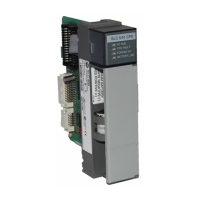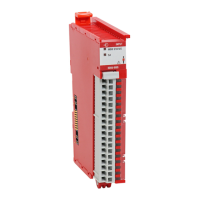Rockwell Automation Publication 5000-UM005B-EN-P - November 2015 29
Common Analog I/O Module Features Chapter 2
Fault and Status Reporting
The 5069 Compact I/O analog I/O modules report fault and status data along
with channel data. Fault and status data is reported in the following ways:
• Logix Designer application
• Module status indicators
For more information on fault reporting, see the individual module feature
chapters and Appendix A,
Troubleshoot Your Module on page 123.
Module Inhibiting
Module inhibiting lets you indefinitely suspend a connection, including Listen
Only connections, between an owner-controller and an analog I/O module
without removing the module from the configuration. This process lets you
temporarily disable a module, such as to perform maintenance.
You can use module inhibiting in the following ways:
• You write a configuration for an I/O module but inhibit the module to
prevent it from communicating with the owner-controller. The owner
does not establish a connection and the configuration is not sent to the
module until the connection is uninhibited.
• In your application, a controller already owns a module, has downloaded
the configuration to the module, and is exchanging data over the
connection between the devices.
In this case, when you inhibit the module, the owner-controller behaves as
if the connection to the module does not exist.
You can use module inhibiting in these instances:
• You want to update an analog I/O module, for example, update the
module firmware. Use the following procedure.
a. Inhibit the module.
b. Perform the update.
c. Uninhibit the module.
• You use a program that includes a module that you do not physically
possess yet. You do not want the controller to look for a module that does
not yet exist. In this case, you can inhibit the module in your program until
it physically resides in the proper slot.
To see where to inhibit a 5069 Compact I/O analog I/O module, see
page 90.
IMPORTANT
Whenever you inhibit an output module that is ProgMode enabled, it
enters Program mode, and all outputs change to the state configured
for Program mode.
For example, if an output module is configured so that the state of the
outputs transition to zero during Program mode, whenever that
module is inhibited, outputs transition to zero.
